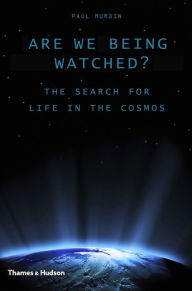Read an Excerpt
Preface: Ghostly Apparitions in the Night
I had watched a dozen comets, hitherto unknown, slowly creep across the sky as each one signed its sweeping flourish in the guest book of the Sun.
-- LESLIE C. PELTIER, STARLIGHT NIGHTS, 1965
Comets are like cats: they have tails, and they do precisely what they want. This book tells the story of comets, from their origins at the start of our solar system to Comet Hale-Bopp, which so many of us recently saw. The book is designed to tell that story by bringing together, in a simple, brief, and interesting way, the diverse subjects of comets, life, and impacts. The story of comets is a story of beautiful ghostly apparitions. It is also a narrative of wanton destruction and of the dawn of life.
Comets also are messengers. One of the hottest science stories of the century began on the icy wastelands of Antarctica at the end of 1984, when a group of young scientists riding a snowmobile found a meteorite. That rock, it turned out, was an emissary from Mars that had come here to stay. Blasted out of the Martian rock by the crash of a comet or an asteroid perhaps a billion years ago, the rock traveled lazily about the Sun as ages passed before striking the Earth, bringing with it evidence that simple life forms might have once inhabited Mars. The tale of that rock and all its scientific implications brings us to ponder what else comets have brought us through the ages and ultimately leads to the story of the life and death cycles of planet Earth.
When Comet Hale-Bopp swung around the Sun in the spring of 1997, its bridal-veil appearance on the world stage attracted the attention of millions. One night, I walked outside a hotel to see groups of people huddled in the parking lot, pointing out the comet. Another evening, two somewhat inebriated people looked at me, then at the sky to point out "Comet Halley-Bobb." Whatever you call it, the Great Comet of 1997 put on a spectacular performance. Newsweek's cover story pointed out that when it last appeared, around 2400 B.C., the pyramids of Egypt were relatively new. Although we do not know the comet's last orbit with such a degree of accuracy, the magazine's point was unerring: Hale-Bopp last viewed a very different picture of civilization on planet Earth.
The big comet's 1997 visit was an unsettled time on Earth, but for thirty-nine troubled souls it was deadly. On a cold spring morning, the members of San Diego's Heaven's Gate cult, believing that the comet offered them a journey to a new life, committed suicide. I was stunned when I heard this news. For me, comets are beautiful things, and searching for them is a happy task that I have done for more than thirty years. The idea that a comet would be associated with death does not make sense to me, but it did throughout most of the history of civilization. The famous illustration of a group of terrified soldiers gazing at Halley's comet just before the Battle of Hastings in 1066, preserved on the tapestry in a church in Bayeux, France, drives home humanity's perception that comets are omens of disaster. The word "disaster" was, in fact, made to show this role: it comes from the Greek "bad star."
Comets have had a bad rap for thousands of years, and it is only in the last two hundred years that science has been able to rehabilitate them. Instead of arriving on courses that would bring terrible calamity to some prince on Earth, they now circumnavigate the solar system following paths we call orbits. In 1979, one of the most astonishing stories in the history of science began as Walter and Luis Alvarez noticed, in a layer of Italian rock that dated back to the time of the elimination of the dinosaurs, the first evidence of cosmic impact. They proposed the revolutionary idea that a body from space collided with Earth, causing a mass extinction 65 million years ago. In 1991, a hundred-mile-wide impact crater was discovered, buried under Mexico's Yucatán Peninsula, that confirmed, or at least validated, their thesis, Was it possible that comets do not predict disaster, but that they actually cause disaster?
The discovery that three-quarters of the species of life on this planet, including the dinosaurs, might have been extinguished by a single strike from space brought home to the scientific community the idea that impacts played a role in the course of life on Earth. But an event was about to take place that would bring the new evidence of impacts to front pages all over the world. in the summer of 1994, a train of shattered remnants of Comet Shoemaker-Levy 9 slammed into Jupiter, the solar system's largest planet. It was the greatest explosion ever seen in our solar system. For several months after the collisions, dark clouds the size of Earth persisted over the impact sites. These strikes vividly displayed the awesome force that Nature can bring to bear in a comet crash. Suddenly, we had new ideas about our planetary heritage. The Earth has been struck by comets, and these collisions made drastic changes in the shape of life here.
There's more to this story. In 1986, a flotilla of spacecraft found carbon, hydrogen, oxygen, and nitrogen in Halley's comet -- the building blocks of life -- in virtually identical amounts to their existence in humans. Is it likely that when comets struck the primordial Earth, they brought the materials that made life possible?
Comets: Creators and Destroyers tells the story of comets from this new perspective. Gossamer travelers that visit our sky from time to time, these flying balls of ice and dust have shaped the course of life on Earth. In a special sense, we are the children of comets.
Copyright © 1998 by David Levy



















